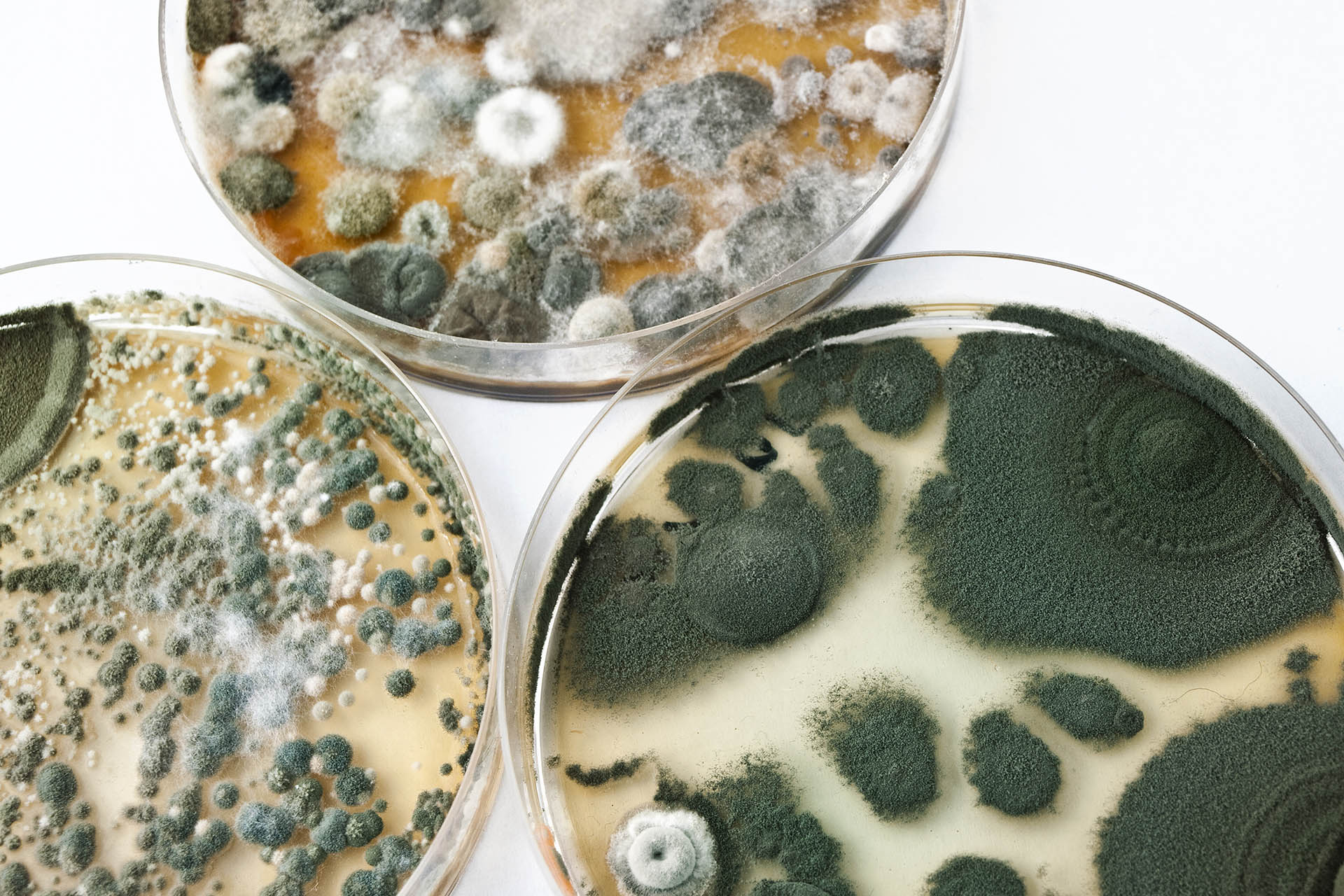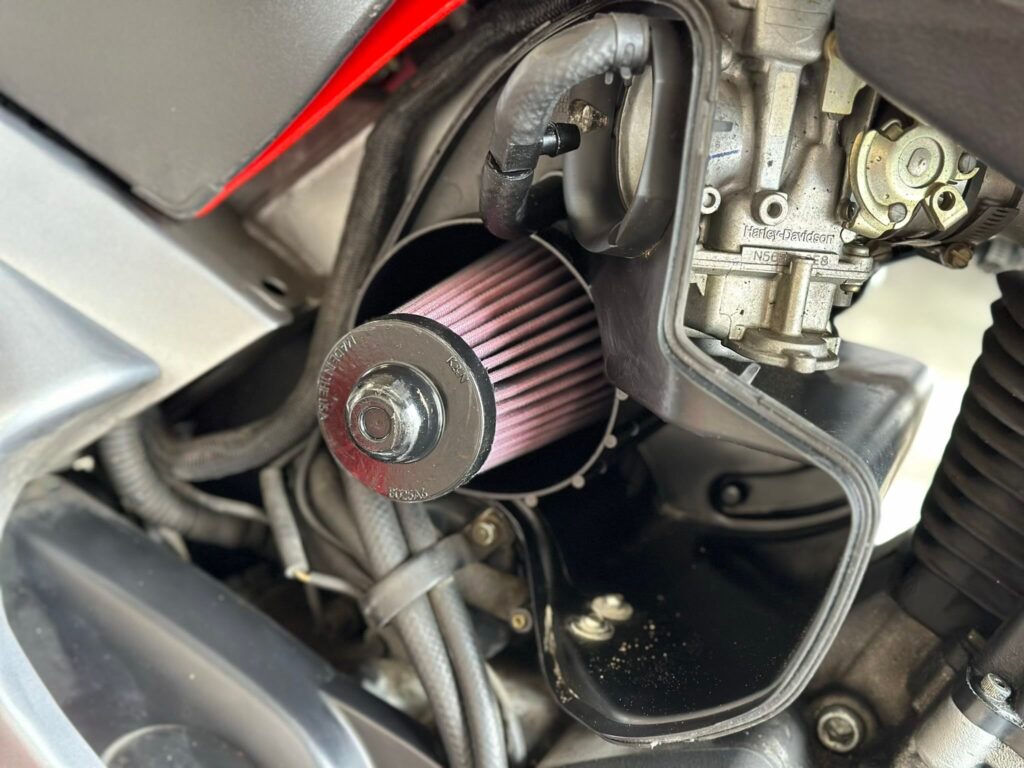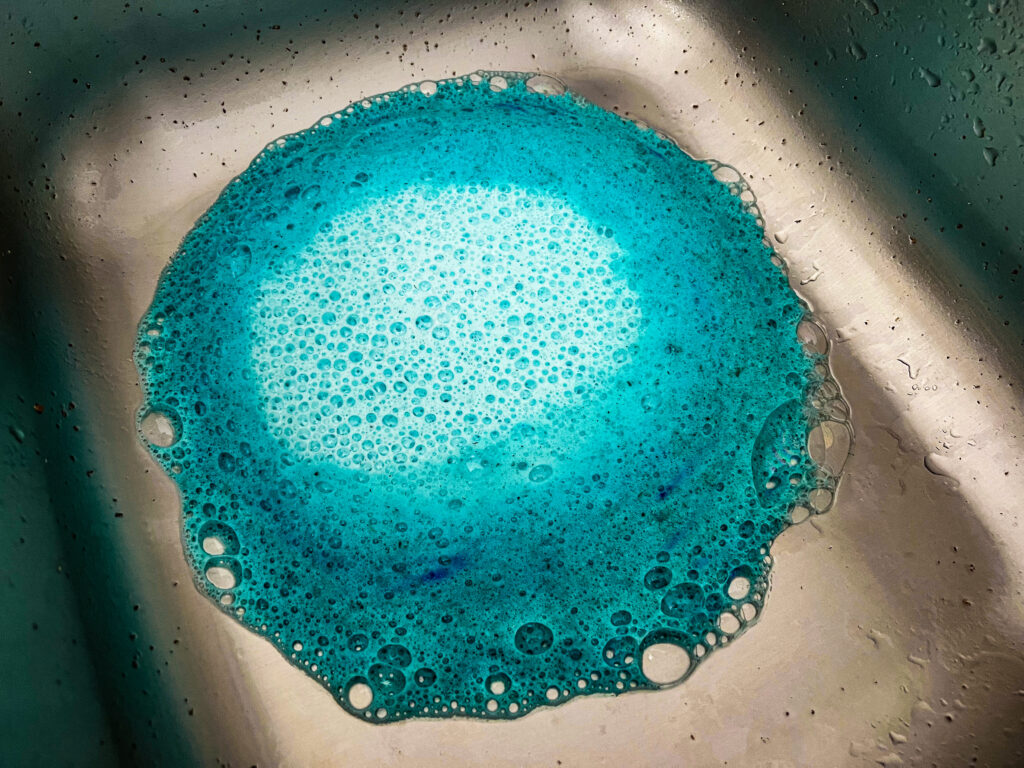
You start your car, crank up the AC, and—bam!—a disgusting smell fills the cabin. That familiar musty, sour, or even rotten odor can quickly turn a pleasant drive into an unbearable experience. Many drivers mistakenly dismiss this as merely an annoying characteristic of an older vehicle, or something that will simply dissipate over time. However, this unpleasant stench is far more than just a nuisance; it’s a critical warning sign emanating from deep within your vehicle’s climate control system. It signals a problem that demands your immediate attention.
This pervasive problem affects cars of all types, especially those in humid environments or vehicles that aren’t driven regularly. The musty smell is a direct indicator that tiny organisms like mold, mildew, and bacteria have found a prime breeding ground within your car’s air conditioning system. These unwelcome guests thrive in the dark, wet conditions created when moisture accumulates inside the AC components, transforming your vents into a potential “toxic air tunnel” rather than a source of fresh, clean air.
Ignoring this warning sign can lead to more than just an unpleasant driving experience. It means you’re constantly inhaling mold spores, bacteria, and stale air trapped inside the system, which can exacerbate allergies, cause headaches, or even lead to respiratory irritation. Addressing this issue promptly not only restores comfort to your cabin but also safeguards your health. This comprehensive guide will break down the primary causes behind that musty car AC smell, offering clear insights into what’s really happening inside your vents and why neglecting it only makes matters worse.

1. **Mold and Mildew Growth: The Root of the Musty Odor**When your car’s AC emits that unmistakable musty odor, the most common culprit is often the proliferation of mold and mildew within the system. This phenomenon occurs because the evaporator core, the component responsible for cooling the air, naturally creates condensation as warm air passes over its cold surfaces. Normally, this water efficiently drains out through a small tube located underneath your car.
However, if this crucial drainage process is interrupted, or if there’s excessive moisture buildup, the evaporator core and surrounding components become a damp, inviting environment. This stagnant moisture, combined with spores, pollen, and other organic debris that inevitably enter the system, provides the perfect conditions for mold and mildew to thrive. These microbes form a thin biofilm on the fins of the evaporator, and as they grow, they release the volatile organic compounds responsible for the gym bag or swamp-like odor that permeates your cabin.
Parking in humid conditions, which is common in many regions, significantly worsens this problem. The lingering humidity provides a continuous source of moisture for microbial growth, making it harder for the system to dry out naturally. Furthermore, failing to allow your AC system to dry out thoroughly after use can leave the evaporator damp, creating an ideal habitat for these odor-causing organisms to establish themselves and multiply. Each time you activate the AC, these microscopic mold spores are then blasted directly into your car’s interior, causing that immediate, unpleasant musty whiff.
Automotive experts certified by the National Institute for Automotive Service Excellence (ASE) confirm that fixing this problem quickly improves the air you breathe. While mold typically doesn’t damage your AC parts structurally, its presence significantly degrades air quality and produces strong odors that air fresheners can only temporarily mask. Addressing the root cause—the moisture and microbial growth—is essential for truly eliminating the musty smell and ensuring a healthier cabin environment.

2. **Bacteria & Fungi Infestation: The Invisible Health Hazard**Beyond just mold and mildew, your car’s AC system can become a breeding ground for various bacteria and fungi, adding another layer of complexity to that persistent musty smell. The air conditioning system doesn’t just cool and dehumidify; it also acts as a collection point for various particles floating within your cabin and entering from the outside. This includes dust, skin flakes, pollen, and even tiny food particles, all of which can be drawn into the system.
Over time, these organic materials accumulate inside the evaporator coil and within the intricate network of vents and ducts. When these particles settle on damp surfaces—a common occurrence in an AC system—they provide a rich food source for bacteria and fungi. These microorganisms then begin to multiply rapidly, creating what can become a “microbial party” within your HVAC system. As these bacteria and fungi metabolize the organic debris, they release their own distinct unpleasant odors, contributing significantly to the overall stale and musty scent.
The health implications of breathing in air contaminated with these microbes are considerable. For instance, breathing in contaminated air can lead to headaches, aggravate allergies, and cause constant sneezing and congestion. For individuals with asthma, the situation is even more critical, as mold spores and bacterial byproducts can trigger severe breathing problems. This invisible danger means that every time you turn on your AC, you could be inhaling invisible bacteria and mold spores directly into your lungs.
The initial burst of air, especially right at startup, often carries the highest concentration of these odor-causing agents, making the smell most pronounced then. This continuous exposure to contaminated air can not only be irritating and distracting while driving but also pose a genuine risk to your respiratory health. Therefore, understanding that the musty smell is often an indicator of these unseen infestations underscores the importance of proper AC maintenance and cleaning.

3. **The Clogged Cabin Air Filter: A Silent Saboteur of Fresh Air**Your car’s cabin air filter plays a vital, yet often overlooked, role in maintaining the quality of the air you breathe and preventing musty odors. Its primary function is to act as a barrier, trapping dust, pollen, pollutants, and other airborne particles before they can enter your AC system and, subsequently, your car’s interior. However, when this filter becomes clogged, it transitions from a protective barrier into a significant contributor to the musty smell.
A dirty cabin air filter can quickly become oversaturated with moisture and organic debris. As it collects more and more contaminants, its ability to filter effectively diminishes, and it can even begin to restrict proper airflow through the HVAC system. This restricted airflow, in turn, allows even more moisture to linger within the evaporator housing and ducts, creating an even more hospitable environment for mold, mildew, and bacteria to fester and thrive. The filter itself can also become a direct site of microbial growth, acting like a damp sponge full of odor-producing microbes.
Many car manufacturers recommend replacing the cabin air filter regularly; for instance, Toyota recommends a change every 15,000 miles, depending on the vehicle and location, while most car makers suggest replacing this filter every 15,000–30,000 miles. However, if you live in a humid climate or a dusty area, such as Dubai, or during high pollen seasons, you might need to change it more frequently. Signs that your cabin air filter is overdue include noticeably weaker airflow, a stale or musty smell that persists even after initial use, and even excess dust buildup inside your car.
A clogged filter not only traps moisture and contaminants but also recirculates dirty, allergen-filled air, making the musty smell worse and potentially irritating allergies or breathing problems. Replacing a dirty, saturated filter is often the cheapest and easiest first step in addressing a musty AC smell and can sometimes solve the issue immediately, restoring proper air circulation and removing a key breeding ground for odors.

4. **Dusty Ducts and Blower Wheel Buildup: Restricting Airflow and Trapping Microbes**The intricate network of ducts and the blower wheel are critical components of your car’s HVAC system, responsible for circulating conditioned air throughout the cabin. However, these areas are also susceptible to accumulating dust, dirt, pollen, and other fine particles, which can significantly contribute to a musty AC smell. As air is drawn into the system, especially in dusty environments, these contaminants can settle and build up on various surfaces within the ducts and on the blower wheel itself.
This accumulation of dirt and debris has a dual negative effect. First, it restricts airflow, making your AC system work harder to push air through the vents, and leading to noticeably weaker airflow even on full blast. Reduced airflow means that moisture within the system, particularly around the evaporator coil, takes longer to dry out after the AC is turned off. This lingering moisture, combined with the accumulated dust, creates a perfect breeding ground for mold, bacteria, and fungi, which feed on the organic matter in the dust.
Second, the layer of dust and grime itself can become impregnated with microbial growth. As the fan pushes air through these contaminated ducts and over a dirty blower wheel, it aerosolizes these microbes and their odor-producing byproducts, directly blasting them into the cabin. This results in a stale, musty smell that can get stronger with each drive, even if the evaporator coil itself has been recently cleaned. The problem is not just on the evaporator, but throughout the system’s air pathways.
Cleaning the blower wheel and accessible duct sections, often reached through the cabin filter opening, is an important step in tackling persistent odors. When these parts are clean, air flows freely, allowing the system to dry out more effectively between uses and making it much harder for mold and bacteria to take hold. This proactive cleaning helps ensure that the air circulating in your cabin is not only cool but also truly fresh and free of hidden microbial contaminants.

5. **Overusing Recirculation Mode: Unintentionally Cultivating Humidity**Many drivers instinctively use the recirculation mode in their car’s AC system, especially in hot weather, as it helps the cabin cool down faster. By drawing air from inside the cabin and re-cooling it, the system doesn’t have to work as hard to cool hot outside air. While this is effective for quick cooling, prolonged or exclusive use of the recirculation mode can inadvertently contribute to the musty AC smell by trapping and raising humidity levels within the HVAC system and cabin.
When the AC is on recirculation, it continuously reprocesses the air inside your car. This air contains moisture from your breath, any wet clothing, or even drinks. Instead of exchanging this humid air with drier, outside air, the system keeps recycling it. This leads to higher humidity lingering within the HVAC box and on the evaporator coil, especially after you park and the system shuts down. This constant, elevated humidity creates an ideal damp environment that actively encourages the growth of mold, mildew, and bacteria on the evaporator and within the ducts.
Car manufacturers like Toyota, Honda, and GM often provide service advice for climate control systems that includes recommendations for managing moisture. They suggest that bringing in fresh air periodically can help reduce this moisture buildup. Switching to fresh-air mode for a few minutes before reaching your destination, or using it occasionally during your drive, allows drier outside air to circulate through the system, helping to dry out the evaporator and ducts more effectively.
This simple habit can make a significant difference in preventing the damp conditions that microbes love. By consciously limiting the overuse of recirculation and introducing fresh air, you actively reduce the internal humidity, thereby starving the odor-producing microorganisms of the moisture they need to thrive. It’s a small adjustment to your driving routine that yields big benefits in maintaining a fresh-smelling AC system.

6. **Subtle Water Leaks: Introducing Unwanted Moisture into Your HVAC System**While many of the causes for a musty AC smell originate within the HVAC system itself, external water leaks can also play a significant, often overlooked, role by introducing unwanted moisture into the cabin or directly into the HVAC case. These leaks might not always be obvious, but they can create persistently damp conditions that lead to the proliferation of odor-causing microbes.
Common sources of such external water leaks include leaky door seals, compromised windshield cowls, or clogged sunroof drains. When these seals or drains fail, rainwater can find its way into the car’s interior. This could result in damp carpets near the intake vents, or even directly allow water to enter the HVAC box. This added moisture significantly raises the humidity around the evaporator and within the ducts, providing an ongoing source of dampness that encourages mold and bacteria to thrive, keeping musty odors alive even after other cleaning efforts.
If you’ve addressed common AC problems like a dirty cabin filter or a clogged drain tube, but the musty smell persists, it’s crucial to investigate potential water leaks. Signs to watch for include unexplained dampness in the footwells, especially after rain or a car wash, or visible water stains on interior surfaces near the dashboard or headliner. These persistent moisture sources can override any efforts to dry out your AC system, making it a continuous battle against odor if the leak isn’t identified and fixed.
Finding and fixing the leak source is paramount for long-term odor elimination. This involves inspecting the door and window seals, checking the cowl for debris that might block drainage, and ensuring sunroof drains are clear. Once the leak is sealed, thorough drying of any affected areas within the car is necessary to prevent residual moisture from fostering new microbial growth. By addressing these external water intrusions, you eliminate a crucial factor that contributes to chronic HVAC humidity and ensures that your AC system can stay dry and odor-free.
Navigating the unpleasant reality of a musty car AC can feel daunting, especially when the underlying causes seem hidden deep within your vehicle’s intricate systems. However, armed with the right knowledge and a practical, step-by-step approach, you can effectively banish those unwelcome odors and restore fresh, clean air to your cabin. This guide transitions from diagnosing the problem to implementing tangible solutions, focusing on actionable strategies that range from straightforward DIY fixes to understanding when professional intervention is warranted. Let’s delve into the methods that will make that stale smell a distant memory.

7. **Replacing Your Cabin Air Filter Regularly**Your car’s cabin air filter serves as the front-line defense against airborne contaminants, diligently trapping dust, pollen, and pollutants before they ever reach your AC system or your lungs. Yet, this crucial component is often overlooked, and when it becomes saturated with debris and moisture, it transforms from a protective barrier into a significant contributor to that musty smell. A dirty filter restricts airflow, allowing moisture to linger, and becoming a prime breeding ground for odor-producing microbes.
Automotive experts and car manufacturers consistently recommend regular replacement of the cabin air filter to maintain optimal air quality and system efficiency. For instance, Toyota suggests a change every 15,000 miles, though most car makers generally advise replacement every 15,000–30,000 miles. However, if you frequently drive in humid climates, dusty environments like Dubai, or during high pollen seasons, you might need to swap it out more frequently to prevent it from becoming overwhelmed and saturated.
Signs that your cabin air filter is overdue for a change include noticeably weaker airflow, a persistent stale or musty smell even after initial AC use, or an increase in dust accumulation inside your car. Replacing a dirty, saturated filter is often the cheapest and most straightforward first step in addressing a musty AC odor. This simple act can sometimes resolve the issue immediately, by removing a major breeding ground for microbes and restoring proper air circulation throughout the HVAC system.
Locating your cabin air filter is usually straightforward, typically found behind the glove box, under the dashboard, or sometimes near the windshield under the hood. Your car’s manual will provide precise instructions. When selecting a new filter, consider upgrading to an activated carbon filter, which offers enhanced odor-absorbing capabilities in addition to trapping particles. Most replacements require minimal tools, often just your hands, making it a quick and impactful DIY fix.
Read more about: Behind the Grease and Grime: 12 Cars That Make Mechanics Secretly Cheer (Or Curse) When You Roll In

8. **Deep Cleaning the Evaporator Coil with Foam Cleaner**The evaporator coil, hidden deep within your dashboard, is the primary suspect in most cases of persistent musty odors because it’s constantly exposed to moisture during AC operation. This damp environment, combined with dust and organic debris, creates an ideal habitat for mold, mildew, and bacteria to form a biofilm. Simply masking the smell with air fresheners or surface cleaning won’t address this deeply embedded microbial growth.
Automotive-specific foaming cleaners are engineered precisely for this challenge. These products are designed to expand and penetrate the evaporator fins, breaking down the biofilm and killing mold spores and bacteria on contact. They offer a direct attack on the root cause of the smell, going beyond what general cleaning can achieve by reaching the inaccessible parts of the coil where microbes thrive.
To effectively use an AC evaporator cleaner foam, ensure your engine is running and the AC is set to recirculate with the fan at maximum speed. Spray the cleaner into the system’s air intake, which is typically located at the base of the windshield outside or under the dashboard on the passenger side. Allow the foam to circulate through the system for approximately 10–15 minutes, ensuring it fully coats the evaporator. After this, turn off the system and wait another 30 minutes before running just the fan to thoroughly dry everything out, following the product instructions for best results.
For an even more direct approach, some vehicles allow access to the blower motor, enabling you to aim the foam cleaner closer to the evaporator. While this offers better cleaning coverage, it’s not universally possible and may require some disassembly or specific knowledge of your vehicle model. It’s often recommended to perform this cleaning early in the morning during warmer months, as cooler system temperatures prevent the foam from evaporating too quickly, maximizing its effectiveness.

9. **Clearing the AC Condensate Drain Tube**An often-overlooked yet critical component in preventing musty AC smells is the condensate drain tube. Every time your AC dehumidifies the air, water forms on the cold evaporator coil, and this water is meant to drain harmlessly out from under your car. A small puddle of water under your vehicle on a hot day is a healthy sign that your AC system is working as intended.
However, when this crucial drain tube becomes blocked—often by leaves, dirt, mud, or other road debris—the condensate has nowhere to go. This leads to water pooling inside the evaporator housing and ducts, creating a perpetually damp environment. This stagnant water, combined with accumulated dust and biofilm, becomes a perfect breeding ground for odor-causing microbes to flourish, intensifying that musty or mildewy smell over time.
One of the most alarming indicators of a blocked AC drain tube is the presence of water inside the cabin, particularly damp carpets in the footwell on the passenger side. Conversely, if you observe no water dripping under your car on a hot day with the AC running strongly, it’s a strong sign of a blockage. Beyond the odor, continuous water pooling inside the car can lead to significant damage to the vehicle’s interior, electrical components, and even structural rust over time.
Clearing the drain tube is usually a simple process, often involving gently opening the rubber elbow at the drain outlet from underneath the car to allow pooled water to escape. Regularly inspecting and clearing the drain tube, along with keeping the cowl intake at the base of the windshield clear of leaves and debris, are vital preventative measures. Ensuring this drain flows freely eliminates the stagnant water source that fuels mold and bacteria, thereby preventing musty smells and protecting your car’s interior from costly water damage.

10. **Disinfecting Vents and Blower Wheel**Beyond the evaporator coil, the intricate network of ducts and the blower wheel are pivotal for circulating conditioned air throughout your car’s cabin. Unfortunately, these areas are also highly susceptible to accumulating dust, dirt, pollen, and other fine particles, which can significantly contribute to a musty AC smell. As air is drawn into the system, these contaminants settle and build up on surfaces within the ducts and on the blower wheel itself.
This accumulation creates a twofold problem. First, it restricts airflow, forcing your AC system to work harder and leading to noticeably weaker air delivery. This reduced airflow, in turn, causes moisture, particularly around the evaporator coil, to take longer to dry out after the AC is switched off, perpetuating damp conditions. Second, the layers of dust and grime become impregnated with microbial growth, feeding the very organisms that produce the foul odors.
When the fan pushes air through these contaminated ducts and over a dirty blower wheel, it aerosolizes these microbes and their odor-producing byproducts, blasting them directly into the cabin. This results in a stale, musty smell that can strengthen with each drive, even if the evaporator coil itself has been recently cleaned. The issue isn’t confined to a single component but extends throughout the system’s air pathways, demanding a comprehensive cleaning approach.
Cleaning the blower wheel and accessible duct sections is an essential step in tackling persistent odors. These areas can often be reached through the cabin filter opening. Using a non-fragranced, HVAC-safe disinfectant to wipe accessible surfaces and spray into the vents, while avoiding soaking electronics, ensures that air flows freely. This allows the system to dry out more effectively between uses, making it significantly harder for mold and bacteria to establish a foothold and circulate contaminated air back into your driving environment.

13. **Implementing a System Drying Routine**One of the simplest yet most effective preventative measures against musty AC smells revolves around a critical principle: eliminating moisture from the evaporator coil at the end of each drive. Mold and bacteria thrive in damp conditions, so depriving them of their essential water source is key to keeping your AC system fresh. This straightforward habit, recommended by carmakers like Toyota, Honda, and GM, can make a profound difference.
Before you reach your destination and turn off your car, adopt the practice of switching off the air conditioning compressor (the AC button) but keeping the fan running on a medium or high setting for about five minutes. This allows the fan to blow ambient air over the cold, damp evaporator coil, effectively drying out any residual condensation. By removing this moisture, you eliminate the ideal breeding ground for mold, mildew, and bacteria that would otherwise fester once the car is parked.
This simple routine takes just a few minutes but yields significant long-term benefits in maintaining a fresh-smelling AC system. It’s a proactive step that starves odor-producing microorganisms of the moisture they need to thrive, preventing the buildup that leads to those unpleasant musty odors. Incorporating this into your daily driving habits can drastically reduce the likelihood of the smell returning, making it a cornerstone of effective AC maintenance.
Furthermore, adjust your prevention routine with the seasons for optimal results. In very humid months, occasionally use your car’s defrost setting—even in warm weather—as this engages both the AC and heating elements, helping to dry the system more effectively. During winter, running your AC for at least five minutes each week, even in cold conditions, helps keep seals lubricated and prevents stagnation, contributing to overall system health.
Read more about: The Silent Saboteurs: Why Your Semi-Trailers Are Leaking Days Before They Hit the Road

12. **Addressing External Water Leaks**While many sources of musty AC smells originate within the HVAC system itself, external water leaks can play a significant, often overlooked, role by introducing unwanted moisture into the cabin or directly into the HVAC case. These leaks might not always be immediately obvious, but they can create persistently damp conditions that lead to the chronic proliferation of odor-causing microbes, frustrating efforts to maintain a fresh-smelling interior.
Common culprits for such external water intrusion include compromised door seals, clogged sunroof drains, or issues with the windshield cowl. When these components fail, rainwater can find its way into the car’s interior, leading to damp carpets, particularly in the footwells near intake vents, or even allowing water to bypass into the HVAC box itself. This continuous influx of moisture significantly raises humidity around the evaporator and within the ducts, providing an ongoing source of dampness that actively encourages mold and bacteria to thrive, keeping musty odors alive even after other cleaning efforts.
If you’ve diligently addressed internal AC problems like a dirty cabin filter, a clogged drain tube, or evaporator cleaning, yet the musty smell stubbornly persists, it becomes crucial to broaden your investigation to potential external water leaks. Key signs to watch for include unexplained dampness in the footwells, especially after rain or a car wash, or visible water stains on interior surfaces near the dashboard or headliner. These persistent moisture sources can negate any efforts to dry out your AC system, making it a continuous uphill battle against odor if the leak isn’t identified and permanently sealed.
Finding and fixing the leak source is paramount for long-term odor elimination. This typically involves a thorough inspection of door and window seals for cracks or damage, checking the cowl area for accumulated leaves and debris that might block drainage, and ensuring that sunroof drains are completely clear. Once the leak is sealed, it’s equally important to thoroughly dry any affected areas within the car to prevent residual moisture from fostering new microbial growth. By addressing these external water intrusions, you eliminate a crucial factor that contributes to chronic HVAC humidity, ensuring your AC system can stay dry and odor-free.
Read more about: The Silent Saboteurs: Why Your Semi-Trailers Are Leaking Days Before They Hit the Road

13. **Considering an Ozone Treatment for Stubborn Odors**When you’ve exhausted conventional cleaning methods—replacing filters, cleaning coils, and drying the system—and a stubborn musty or putrid odor still lingers, an ozone treatment might be the powerful solution you need. This advanced method is specifically designed for extreme cases, capable of neutralizing even deeply embedded smells that have permeated your AC system and upholstery, going beyond simple masking.
Ozone treatment works by employing an ozone generator to pump O3 gas (ozone) into your vehicle’s sealed cabin and HVAC system. Ozone is a highly reactive molecule that chemically breaks down odor-causing bacteria, mold, and volatile organic compounds (VOCs) at a molecular level. Unlike air fresheners that merely cover up smells, ozone actually oxidizes and destroys the source of the odor, leaving behind a neutral, fresh scent once the treatment is complete.
The process typically takes about 30-60 minutes, depending on the intensity of the odor and the size of the vehicle. During the treatment, the car must be unoccupied. After the ozone generator is removed, the vehicle needs to be thoroughly aired out to dissipate any residual ozone gas, ensuring safety. This method is particularly effective for smells caused by severe mildew, stale odors, smoke, or even the dreaded smell of something having died within the vehicle’s hidden compartments or ducts.
While ozone treatments can be highly effective, they are a stronger approach and often best left to professionals to ensure proper application and safety protocols. For persistent, deep-seated odors that have resisted all DIY efforts, an ozone treatment can be a game-changer, providing a comprehensive cleanup that restores true freshness to your car’s interior by eliminating the microbial source rather than just temporarily covering it up. It represents a significant step towards achieving a truly odor-free cabin.

14. **Knowing When to Call a Professional**While many musty AC issues can be resolved with diligent DIY efforts, there are specific situations where professional intervention becomes not just advisable, but necessary. Recognizing the limits of home remedies is crucial for ensuring both the efficacy of the repair and the long-term health of your vehicle’s HVAC system. Sometimes, the problem is deeper, more complex, or requires specialized tools and expertise that only a certified technician possesses.
Key indicators that it’s time to call in the pros include a chemical smell (which could signal a dangerous refrigerant leak), weak airflow despite a new cabin filter, persistent odors returning quickly after extensive DIY cleaning, or visible water in the footwell even after checking the drain tube. If your AC is struggling to cool properly in conjunction with a musty smell, it suggests a more significant underlying issue that could affect both air quality and system performance, warranting an expert diagnostic.
A trained automotive specialist can perform a comprehensive inspection, utilizing advanced diagnostic tools to pinpoint the exact source of the problem. They can safely access and deep clean components like the evaporator coil and ducts with industrial-grade equipment, perform thorough drainage repairs, and, if necessary, address refrigerant leaks. Professional services ensure that the root cause is identified and corrected, preventing recurrent odors and potential damage to your car’s electrical systems or interior.
While professional dealership services can range from $100–250, they offer a more complete and lasting solution for hard-to-reach parts and complex issues. Investing in expert AC deep cleaning can save you time, frustration, and potentially more expensive repairs down the line, especially for vehicles with larger, more complex heating and cooling systems. For severe or recurring issues, a professional inspection and repair ensure that you’re breathing truly clean, fresh air and that your car’s AC system functions optimally.
Read more about: The Unfiltered Truth: Dame Dash Unleashes Bombshell Revelations on Jay-Z, R. Kelly, and Aaliyah’s Shadowy Past
Getting rid of that musty AC smell isn’t just about comfort; it’s about addressing a critical warning sign from your vehicle. By understanding the underlying causes and applying these actionable solutions—from regular filter changes and targeted cleaning to implementing preventative drying routines and knowing when to seek professional help—you can reclaim a fresh, healthy cabin environment. Remember, regular maintenance is far simpler and more cost-effective than tackling a deeply contaminated system. Make these practices part of your routine, and enjoy crisp, clean air on every journey, transforming your car into the comfortable sanctuary it was meant to be.



